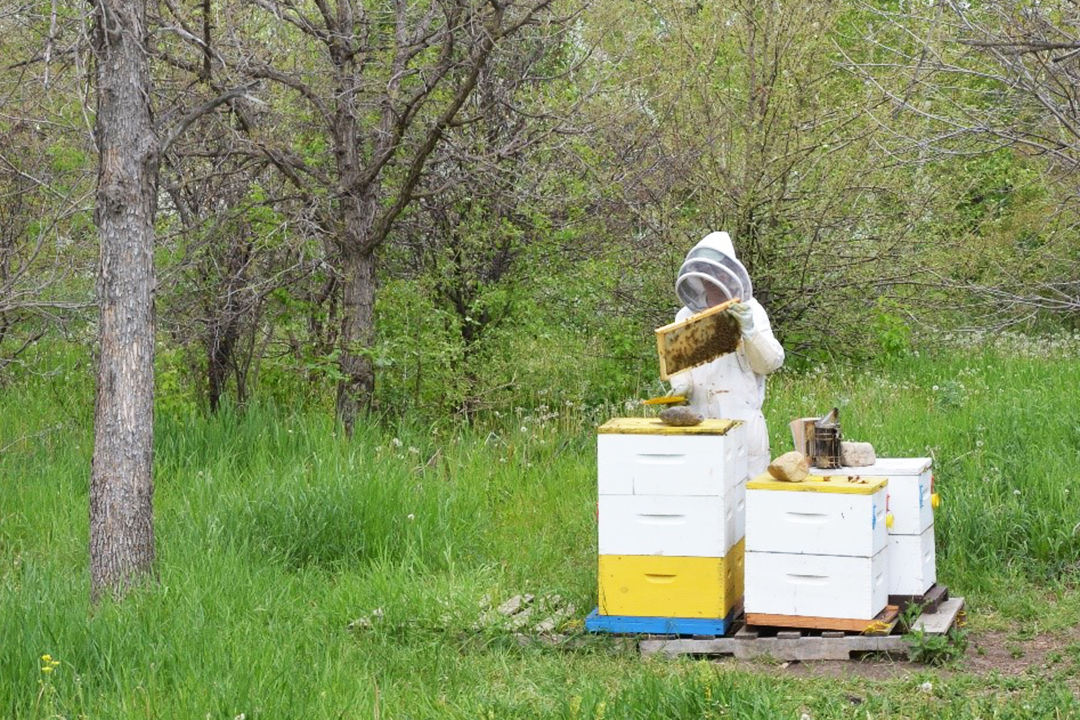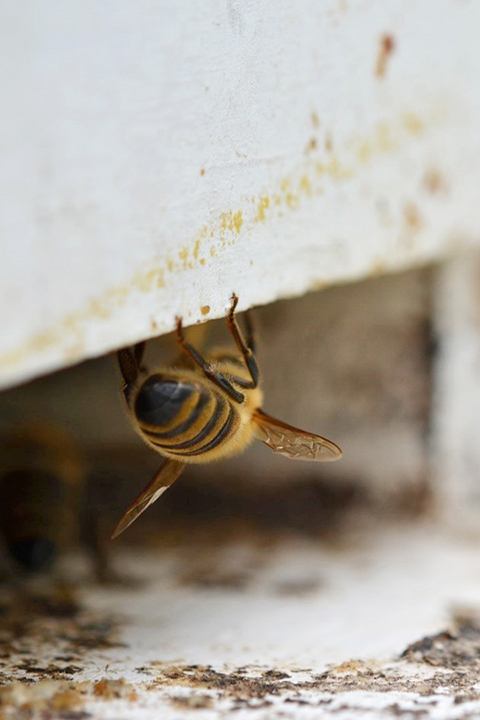
Bee health issues keep researchers busy
At the Western College of Veterinary Medicine (WCVM) a group of veterinary pathologists have devoted their time and attention to the health of the honey bee and their colonies.
By Esther DerksenTalking about honey bees often conjures up sweet thoughts of golden honey, idyllic meadows and perhaps even a beekeeper or two.
But it turns out that bees need veterinarians, too.

“People need to understand that bees have many pests and pathogens just like any other species,” said Dr. Sarah Wood, a PhD student in veterinary pathology at the Western College of Veterinary Medicine (WCVM).
“They need care just like any other species—whether that be drug care or husbandry [or] taking care of the environment around them—we need specialists to be in charge of that care. Just because they are insects doesn’t mean we can ignore them.”
Wood is part of the WCVM’s new honey bee research group that’s led by veterinary pathologist Dr. Elemir Simko. His team of veterinary researchers and graduate students are breaking new ground, applying their training in vertebrate pathology to invertebrates such as honey bees.
They hope to characterize the possible physiological effects that chemicals such as neonicotinoids might be having on honey bees. Their work relies on histopathology techniques—using microscopes to examine bee tissues for visible abnormalities.
In recent years, headlines have been flooded with doomsday proclamations of declining bee numbers and the catastrophic effect that this would have on the global food supply. Insecticides are frequently labelled as the culprit, often accompanied with horror stories of entire apiaries wiped out after a neighbouring field was sprayed for pests.
The intersection between agriculture and ecology and between farmers and beekeepers has never been so apparent, and the health of bee populations is undeniably at risk. And it may be that neonicotinoids, a class of insecticides used on flowering crops—often used against flea beetles on canola crops grown in Western Canada—is partially to blame.
To learn more, WCVM researchers are performing studies of chemicals such as neonicotinoids on living, developing bee larvae and pupae. By exposing developing bees to varying doses in different chemical cocktails—all within the hive structure—researchers hope their study accounts for the complex social structure of bee colonies as well as varying weather conditions. Their investigation will look at what extent and in what way do various crop chemicals affect the development of honey bees.
The researchers are keenly aware of the close yet easily overlooked relationship between beekeepers and farmers.
“It’s about judicious use of pesticides and determining what is the safe dose, because we know that we need pesticides,” said Wood. “We need to find the dose range that is acceptable for pollinators, while at the same time, protecting crops.”
Esther Derksen of Wymark, Sask., is a second-year veterinary student who was part of the WCVM’s Undergraduate Summer Research and Leadership program in 2017. Esther’s story is part of a series of articles written by WCVM summer research students.

